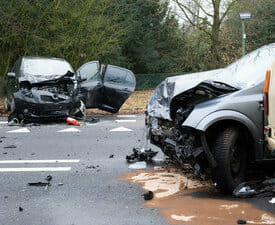
If you are injured in a car accident, you may wonder what are non-economic damages in a car accident case. There could be different types of damages you could receive to compensate you, depending on the facts of your case. Under Pennsylvania law, damages generally fall into two categories: economic and non-economic.
Car accident cases are typically based on negligence law. The plaintiff (the injured person filing the lawsuit) would need to prove that the defendant (the party sued) had an obligation to do or avoid doing something in the situation, and the defendant did not live up to that duty. For example, the defendant was speeding, ran a red light, or was intoxicated.
As a result, the defendant caused the accident and your injuries. You need to establish the harm you suffered. The judge or jury would decide what damages you are entitled to and the amount. Sometimes cases go to alternative dispute resolution such as mediation or arbitration.
Damages in a car accident case measure the harm you suffered in dollars. That is easier to determine for economic (sometimes called special) damages. They are a reduced income or losses that take money out of your pocket. They can be medical bills, the cost of the damage to your car, and the wages you lost because you missed work. Economic damages include past and future costs and income losses. Some of these items may be covered by your own insurance.
What Are Non-Economic Damages?
Non-economic (or general) damages include pain and suffering, embarrassment and humiliation, loss of ability to enjoy life’s pleasures, and disfigurement.
- Pain and Suffering: This can cover physical pain, mental anguish, discomfort, inconvenience, and distress suffered since the accident and what is expected to continue in the future.
- Embarrassment and Humiliation: Compensation can include shame and humiliation you suffer and will feel in the future. Due to your injuries, you may suffer from sexual dysfunction or need help using the bathroom.
- Loss of Life’s Pleasures: Non-economic damages not only cover negative experiences and feelings but the lack of positive activities and emotions. You could be compensated for the loss of life’s pleasures. This includes the inability to enjoy life as you did before your injuries. You may suffer physical limitations or chronic pain. You may not be able to pick up or play with your children as you did before. Playing golf, traveling, or sitting through a movie may be painful and more difficult.
- Disfigurement: This would be any visible, bodily changes that resulted from the accident. Visible scarring from surgical treatment or burns suffered in the accident, as well as amputations and deformities, are reasons to seek compensation.
After evidence of non-economic damages in a car accident lawsuit is offered, a judge or jury needs to evaluate them and decide what the award should be. Factors to consider include:
- Your age (generally the younger, the higher the amount for a lifelong disability)
- The severity of your injuries
- Whether the injuries are temporary or permanent
- The difficulty you have performing activities you enjoyed before the injury
- The nature and extent of the treatment for the injuries
- How much pain and suffering you have endured and how long they are expected to last
- Your physical and mental condition before the accident
- If you have been physically scarred, how much scarring you have and how visible it is.
How to Prove Non-Economic Damages in a Car Accident Lawsuit
How do you prove your injuries and how your life changed because of the accident? Your medical records will be evidence. They include documents from hospitals, physical therapy, mental health professionals, and radiology reports. They should spell out your injuries, limitations, pain level, and treatment.
Because your records will be an “open book,” it is crucial for you to speak honestly with your healthcare providers. As much as you may want to make conversation, saying you are doing OK or feeling good may be highlighted in your medical records. Someone reading these records may think your injury is not so bad.
Expert witnesses may describe your medical condition, your impairments, pain, and what improvement is expected in the future. The defendant’s insurance company will probably have an expert telling a much more positive story. These experts will rely on your medical records and may examine you to come up with their opinion.
During the litigation process, discovery will be conducted. Both you and the other driver will provide information and documents and answer written questions. At a deposition, you will be questioned under oath by one of our attorneys and one representing the insurance company. It is an opportunity to tell your side of the story. You will describe your injury, what you feel, and how it has impacted your life. If your case does not settle, you will have to do the same at a trial.
Social Media is Not Your Friend When You Sue for Non-Economic Damages
For a successful, credible claim for non-economic damages, information about your injuries and their effect on you need to be consistent. It is important that when you talk to others and go on social media, you avoid discussing your injuries.
Potentially, those you talk to could be called as witnesses. The insurance company will review your social media posts. They might be used as evidence at your trial. If you claim you have serious injuries but you post on Facebook photos of yourself living an active, full, happy life, it could stop your claim in its tracks.
Contact an Experienced Williamsport Personal Injury Lawyer
If you or a loved one has suffered a severe injury in a car accident, consult Rieders, Travis, Dohrmann, Mowrey, Humphrey & Waters by calling (570) 323-8711. Based in Williamsport, PA, we serve clients throughout the state of Pennsylvania, offering a free consultation on all personal injury matters. More than that, we offer you experience, knowledge, compassion, and a long history of results.

